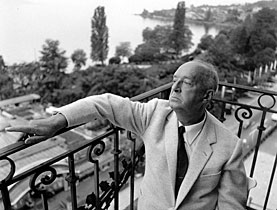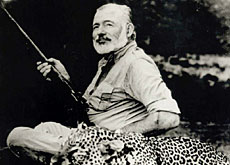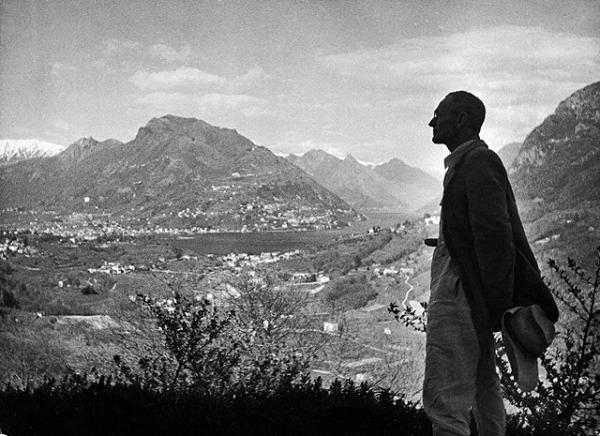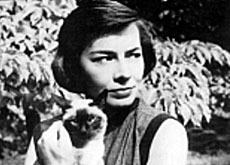Lost Nabokov novel offers “fascinating” insight

The Original of Laura, Vladimir Nabokov's last work, is fragmentary in places but uses unprecedented turns of thought and language, his son Dmitri tells swissinfo.ch.
The Russian literary giant was working on his final novel in Montreux, Switzerland, at the time of his death in 1977. Next month the book will be published, despite the fact that Nabokov never wanted it to see the light of day.
The author of the scandalous Lolita told his heirs to destroy the manuscript of his unfinished 18th novel, originally titled Dying is Fun, which was written on 138 index cards.
But after 30 years and much agonizing, Dmitri announced in April 2008 that he would publish the novel, which remained locked away in a Swiss bank vault.
He said his father had described Laura as one of his most important books and would not have wanted it “to burn like a latter-day Jeanne d’Arc”.
Over the years the fate of the novel has been much debated by Nabokov readers and academics. Several tantalising short excerpts have been made public.
Playboy Magazine has acquired the rights to print a 5,000-word excerpt from the novel, which will appear in their December issue. The novel will be published worldwide for the first time on November 17.
swissinfo.ch: Why did you change your mind and decide to publish The Original of Laura?
Dmitri Nabokov: I never decided not to publish. I wanted to live with the idea, and to perceive within my mind how my father would have reacted had he not been running a hundred-card dash against death.
swissinfo.ch: The online bookseller Amazon.com says the book is about a “wonderfully large man called Phillip Wild, married to a very promiscuous woman, and whose meditations concern the nature of death”. Can you tell us more?
D.N.: Wild discovers a technique for obliterating his body part by part, but does so in a reversible manner. Hence, “dying is fun”.
swissinfo.ch: Why do you say the book is “the most concentrated distillation” of your father’s creativity?
D.N.: It is utterly unlike any of his previous works. Even though it is, in part, fragmentary, it contains unprecedented turns of thought and language.
swissinfo.ch: In one of the first critical reviews of the novel, the Publisher’s Weekly said in July your father might either be “laughing or turning over in his grave”. How do you think he might have reacted to the book being published and also serialised in Playboy?
D.N.: My father would be neither “laughing” nor “turning over in his grave” because only his ashes remain.
Playboy Magazine was created by Hugh Hefner on the premise that, among its various readers, some would not only admire the half-clad beauties but also sample the serious literature that many issues contained.
Nabokov not only enjoyed the Playboy cartoons, but was happy to have part of [his novel] Ada as well as several stories appear in the magazine.
swissinfo.ch: What insight does it give us into your father’s mindset and writing process at the end of his life?
D.N.: His process of composition did not change much; he had an image of the entire work in his head before he started writing.
The writing process itself, as with Lolita, Pale Fire and Ada, entailed writing with a No 2 pencil – neither too hard nor too soft – on index cards. To avoid confusion, he would write on one side only, placing a large X on the reverse. The No 2 pencil has the advantage of being easily erasable, something that he valued. He said he used up the eraser at the end of the pencil more quickly than the pencil itself.
I do not know how he would have reacted to the advent of the computer, as he disliked electricity intensely. But you might say his method was a manual precursor of the computer; he could shuffle or replace the cards in their box at will.
The [hardback] Knopf edition of The Original of Laura has a removable facsimile of Nabokov’s handwritten text on every page, followed by the printed version.
If the reader wishes, they can emulate the author, shuffling and rearranging the cards as he sees fit, particularly those containing the fragmentary sections. [This is] a ludic extra that would have amused Nabokov.
So as not to disfigure his original of the Original, the enterprising reader might need a second copy. This is a solution my father also jokingly suggested for readers of Pale Fire, who could thus avoid flipping constantly from Shade’s poem to mad Kinbote’s commentary, which embodies the novel’s essence.
swissinfo.ch: What reactions are you expecting from the public and critics?
D.N.: It should be an important event and, judging by pre-publication feedback, I foresee three kinds of reactions.
Firstly, praise and gratitude for having decided to preserve what some will consider an embryonic masterpiece; secondly, reproaches for having contravened my father’s request, which was made at a very difficult moment shortly before his death, that the manuscript be destroyed; and finally, comparisons with other works by Vladimir Nabokov, which I do not believe are appropriate.
The book is presented as “a novel in fragments”. Some of its themes remain undeveloped. But it offers a fascinating look into its creator’s laboratory.
My father paid no attention to most critics, and neither do I.
Simon Bradley, swissinfo.ch
Montreux’s main claim to fame is its famous residents, past and present. They include:
Lord Byron, poet
Elisabeth of Habsburg, Empress of Austria and queen of Hungary
Ernest Hemingway, writer
Paul Krueger, South African politician
Henri Nestle, industrialist
Vladimir Nabokov, writer
Igor Feodorovitch Stravinsky, composer
Vladimir Nabokov (April 22, 1899 – July 2, 1977) was a multilingual Russian poet, translator, novelist and internationally recognised butterfly expert.
Nabokov’s first writings were in Russian, but he came to greatest attention in the English language; he published 17 novels before The Original of Laura. Nabokov is noted for his complex plots, clever word play, and use of alliteration.
He gained both fame and notoriety with his novel Lolita (1955), which tells of a grown man’s devouring passion for a 12-year-old girl. This and his other novels, particularly Pale Fire (1962), won him a place among the greatest novelists of the 20th century. His longest novel, which met with a mixed response, is Ada (1969).
On October 1, 1961, Nabokov and his wife Vera moved to the Montreux Palace Hotel in Montreux, Switzerland; he stayed there until the end of his life. From his sixth-floor suite he conducted his business and visited the Alps, Corsica, and Sicily to hunt butterflies.
His first collection of butterflies is now part of the Museum of Comparative Zoology at Harvard University. His valuable European butterfly collection was bequeathed to the Lausanne Zoology Museum, which required 14 years of work to appraise the collection.
In 1976 he was hospitalised with an undiagnosed fever. He went back into hospital in Lausanne in 1977 suffering from severe bronchial congestion, and died on July 2. The remains of Vladimir and Vera Nabokov now lie in Clarens cemetery, near Montreux.

In compliance with the JTI standards
More: SWI swissinfo.ch certified by the Journalism Trust Initiative












You can find an overview of ongoing debates with our journalists here . Please join us!
If you want to start a conversation about a topic raised in this article or want to report factual errors, email us at english@swissinfo.ch.